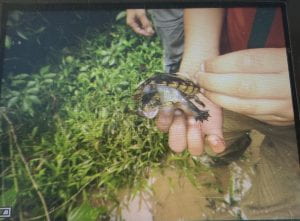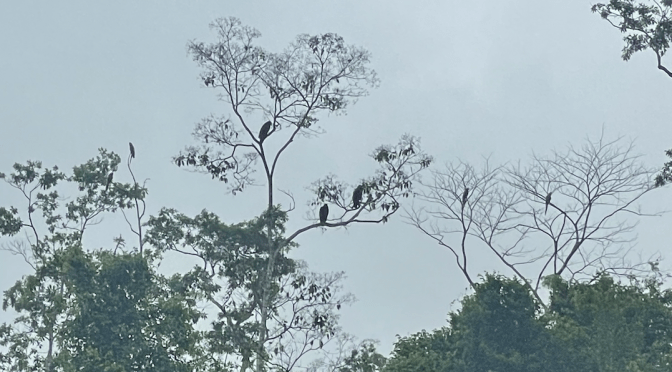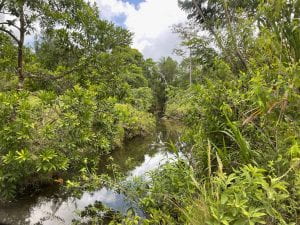Hi all, it’s Faith with Day 10 updates from the 2022 Belize trip!!!
Today we woke up extra early (mostly on accident) to birdwatch from Las Cuevas Deck! We didn’t see any macaws, but we saw two- four toucans flying across the sky. They were gorgeous!
Then we went to plan out next research project. For our question, we chose “which area (trails, jungle, roads) will each animal group (large predators, small predators, large prey, small prey) use the most measured by relative abundance?” Our hypothesis was that big cats would be the dominant animals using paths and roads whereas small prey and mammals would stay under forest cover. We planned on using trap-cameras to get photos of animals as they cross the trails. By the way, while we were planning, we saw 4 scarlet macaws flying around!
Then we set off to se tho the cameras. Our first trip out we ran into our first of three white lipped turtles (Kinosternon leucostomum). This one was easy to identify because of its white lip, it looked just like one of the ones on my taxa sheet, and we found it swimming in a muddy puddle after the morning rains. After we saw the turtle, I set up my first camera on the “shortcut path” back to Las Cuevas. Because I went first, I was deemed the “camera soldier” and had to fix/ mess with lots of peoples cameras.
We did so much in this hike: set up cameras, use gps markers, walk through the jungle, eat termites, climb a bird tower, trip on Mayan stairs, see huge cave spiders, the list is endless.
I didn’t see my taxa again until after a light evening rain, and they were two mud turtles swimming around in mud puddles. I’m finding that these turtles vary greatly in shell appearance and patterning. The last two turtles lacked the classic white lip coloring, which caused me to misidentify them at first. However, their “bridge shell pattern” between the carapace and bottom shell indicated their true species. Plus, they were found in the same environment as the other white lipped mud turtle!
I’m hoping to see other types of mud turtles, like the Tabasco turtle. The wet season is proving to be good for turtle hunting but bad for reptiles and snakes. I’ll let you know what we see next!
Til’ Tomorrow!
QOTD:
“ if you leave me I’m signing up for an online orphanage”











 Helmeted iguana
Helmeted iguana